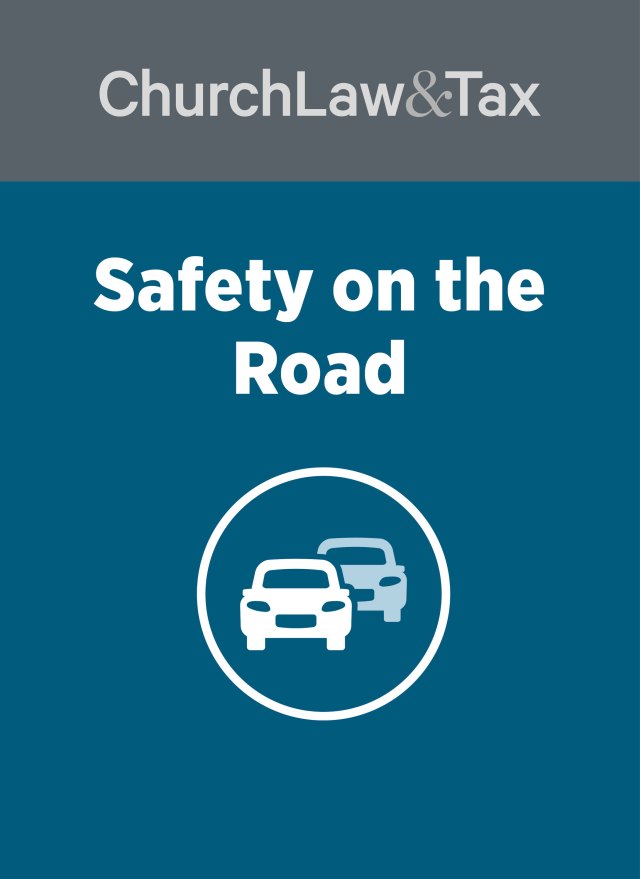Key point. Drivers of church vehicles may be criminally liable for involuntary manslaughter if they operate a vehicle in a grossly negligent or reckless manner that results in the death of one or more persons.
The Pennsylvania Supreme Court upheld the involuntary manslaughter conviction of the driver of a 15-passenger van who fell asleep at the wheel while transporting 21 children, causing an accident in which two children were killed and many more seriously injured.
At 5 p.m. on a sunny afternoon, an adult male (Steve) was driving a Ford 15-passenger van when, by his own admission, he fell asleep. He claimed he awoke just before the van collided with another vehicle, causing it to veer sharply to the right and hit an embankment. The van rode up the embankment, flipped, and came to rest on its passenger side. At the time of the collision there were 24 occupants in the van, including 21 minors. All but one of the minors was under the age of 12. Two of the children were killed in the crash, and numerous others were taken to hospitals with injuries. Because the van had only 15 passenger seats, some of the 23 passengers were crowded into seats while others were seated on the floor. An investigation by an accident reconstruction expert revealed that, at the time of the collision, none of the passengers was restrained by a seatbelt and the van was traveling at 78 miles per hour (23 miles over the posted speed limit of 55 miles per hour).
Steve was charged with several crimes, including two counts of involuntary manslaughter. A trial judge dismissed the manslaughter charges on the ground that the state had failed to demonstrate the recklessness or gross negligence necessary to support such a charge. The state appealed.
Pennsylvania law defines involuntary manslaughter as follows: "A person is guilty of involuntary manslaughter when as a direct result of the doing of an unlawful act in a reckless or grossly negligent manner, or the doing of a lawful act in a reckless or grossly negligent manner, he causes the death of another person." Most states define involuntary manslaughter in the same way. The sole issue in this case was whether the state produced sufficient evidence that the children's deaths were the result of an act undertaken in a reckless or grossly negligent manner. The state insisted that falling asleep at the wheel constituted grossly negligent or reckless behavior, "especially while driving a van full of children—indeed, a van severely overloaded with children, at least some of whom were not seated in the van's seats, much less protected by safety restraints." The risks resulting from this reckless behavior "should have counseled strict compliance with the traffic laws and yet Steve compounded his initial recklessness by intentionally driving at an excessive rate of speed directly before he fell asleep."
The court ruled that Steve could be prosecuted and convicted for involuntary manslaughter. It concluded:
A motor vehicle can be a dangerous instrumentality. Driving is a correspondingly heavily regulated privilege, both as to licensure and the rules of the road, the regulation being a necessary concomitant of the dangers to self and others inherent in driving. The danger increases with the speed at which a vehicle is operated, since speed both reduces reaction times and heightens the consequences of any collision. The danger also may increase if other safety measures are ignored—whether those measures involve vehicle maintenance, internal safety features such as seating capacity or restraints, or the rules of the road. No driver can get behind the wheel without an acute awareness of the "responsible post of duty" he is assuming ….
We need not resolve the question of whether falling asleep alone is enough to raise a jury question of recklessness, since the state proved additional circumstances which revealed a conscious disregard of the serious risk involved here. Steve allowed himself to fall asleep despite the fact that he was driving a van filled with children. The presence of these children would have led a prudent person to be extra-cautious; far from acting cautiously, however, his van was filled to over-capacity and, in addition, the children were not secured with safety belts. Steve elected to drive at an excessive rate of speed—at least 23 miles beyond the 55 m.p.h. speed limit—at the time he allowed himself to fall asleep. Each of these additional factors, beyond the mere fact of falling asleep at the wheel, increased the risk of collision, injury, and death. Moreover, each was a circumstance within Steve's knowledge and control. Viewed in their totality, the circumstances here reveal a pattern of conscious disregard for circumstances that placed the lives of these children in increasing danger. Accordingly, we hold that the state proved a prima facie case of two counts of involuntary manslaughter so as to warrant submission of those charges to a jury.
Application
. This case illustrates two important points. First, gross negligence or recklessness while driving a church vehicle may result in criminal liability for involuntary manslaughter if a person is killed. Second, the court concluded that gross negligence and recklessness were proven, in part, by driving a 15-passenger van overloaded with children at an excessive rate of speed. Anyone who drives church vehicles, especially with minors on board, should be familiar with the ruling. Commonwealth v. Huggins, 836 A.2d 862 (Pa. 2004).
